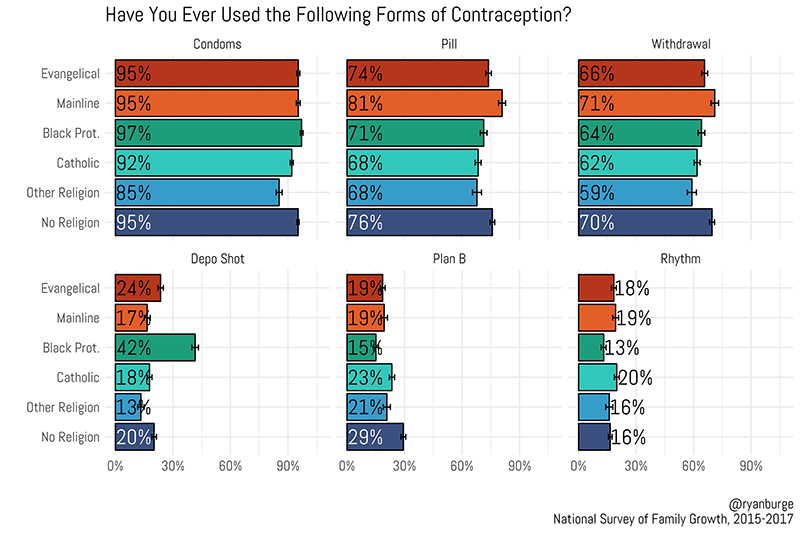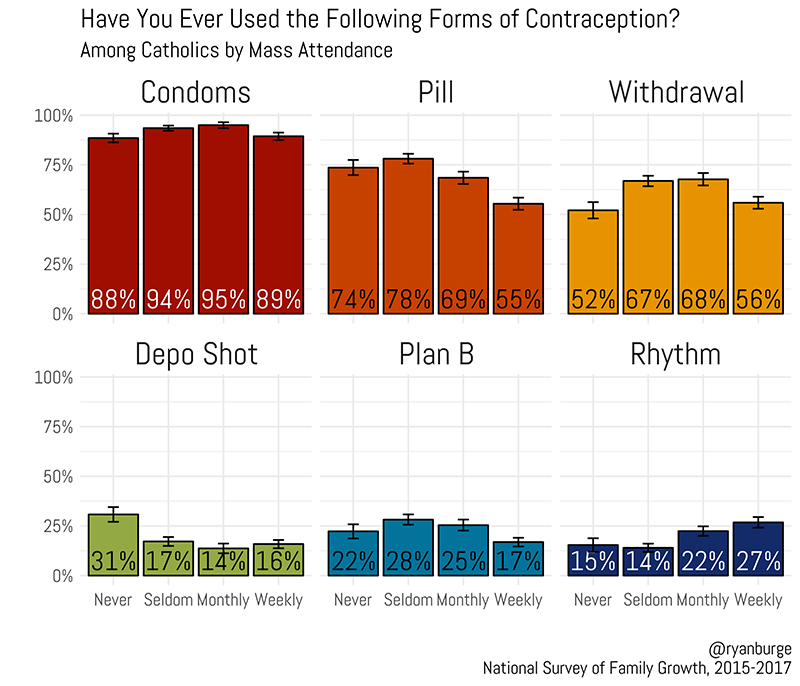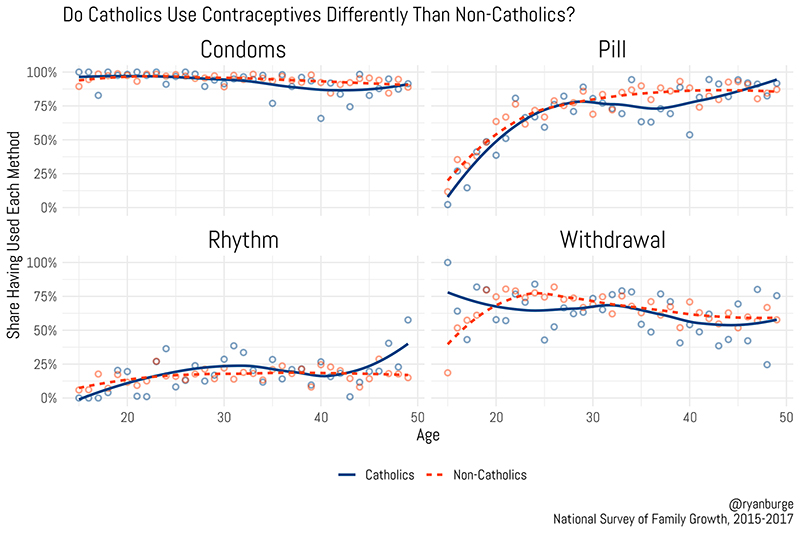Is Catholic teaching on birth control driving people from the pews?
Catholic Church #CatholicChurch

(RNS) — Every major religious tradition has one thing in common: They all highly encourage reproduction among their adherents. The Roman Catholic Church, however, stands out on this issue.
While other religious traditions permit their members to use various types of birth control to manage the number of kids they have, the 1997 Vatican’s Pontifical Council for the Family pointed out that “The Church has always taught the intrinsic evil of contraception.”
The doctrine has been blamed for the decline in church attendance among American Catholics, and serious doubts have been raised as to how closely American Catholics adhere to it.
Some recent numbers from the National Survey of Family Growth give us an idea of just how many Catholics practice birth control.
The National Survey on Family Growth is administered by the U.S. Department of Health and Human Services with the goal of trying to understand factors that lead to marriage, divorce, adoption, pregnancy and other behaviors related to procreation. It includes a battery of questions asking respondents if they have used specific types of contraceptives during their lifetime.
The data indicates that few U.S. Catholics are following the dictates of the pontifical council.

“Have You Ever Used the Following Forms of Contraception?, Grouped By Religious Tradition” Graphic courtesy of Ryan Burge
For instance, 92% of Catholics indicated that they had used condoms as a form of birth control — nearly the same rate as the other Christian traditions, as well as the religiously unaffiliated, who reported condom usage at a rate of 95% and higher. Catholics were only slightly less likely to say that they used the birth control pill (68%) compared with evangelicals (74%) and mainline Protestants (81%).
It’s also notable that Catholics in the sample were more likely to have used emergency contraception than other Christian groups. Twenty-three percent of Catholics reported using the Plan B pill compared with 19% of evangelicals. The only group more likely to use emergency contraception were those of no religious affiliation — 29%.
The only type of birth control allowed under Catholic doctrine is natural family planning. One popular implementation of this approach is known as the rhythm method, in which a couple intentionally avoids sexual contact when fertility is at its highest point during a woman’s menstrual cycle. According to this data, just 20% of Catholics have ever used this method, a rate not substantively different from the rest of the sample.
It can’t be said that Catholic teaching on birth control hasn’t had any effect, but that effect seems to depend on the method, and on how often the person attends Mass.

“Have You Ever Used the Following Forms of Contraception?, Among Catholics by Mass Attendance” Graphic courtesy of Ryan Burge
The share of Catholics who say they never attend Mass and report using condoms in their lifetime (88%) is actually about equal to the share of Catholic condom users who attended service at least once per week (89%).
However, some daylight emerges when it comes to birth control pills. While about three-quarters of Catholics who attend less than monthly report using oral contraception, that number drops to a simple majority among weekly attenders, at 55%.
There is also a small but noteworthy increase in Catholics attending weekly who say they use the rhythm method, with 27% of the most frequent attenders saying that they used the church’s approved method of contraception. Only 15% of Catholics who never darken the church’s door have used the rhythm method.

“Do Catholics Use Contraceptives Differently Than Non-Catholics?” Graphic courtesy of Ryan Burge
There was also a divide on birth control pills based on age. The youngest female Catholics are about 5 percentage points less likely to use this form of contraceptive than non-Catholics. But this gap disappears completely by the time they get to their mid-20s. There’s also a noticeable dip in usage of birth control pills among Catholic women in their late 30s that doesn’t appear in the non-Catholic sample.
Taken together, it’s clear from this data that there is a tremendous disconnect between the Vatican’s teaching on contraception and the behavior of the more than 60 million Catholics in the United States. One may indeed wonder if that tension is driving some Catholics away from the pews or the faith entirely: Scholarly work from the 1990s found that Catholics would leave their local parish if they disagreed with the priest’s comments on abortion to seek out more moderate parishes. The data from the National Survey on Family Growth gives us little reason to think that this has changed.
(Ryan Burge is an assistant professor of political science at Eastern Illinois University, a pastor in the American Baptist Church and author of “The Nones: Where They Came From, Who They Are, and Where They Are Going.” He can be reached on Twitter at @ryanburge. The views expressed in this commentary do not necessarily reflect those of Religion News Service.)
Ahead of the Trend is a collaborative effort between Religion News Service and the Association of Religion Data Archives made possible through the support of the John Templeton Foundation. See other Ahead of the Trend articles here.